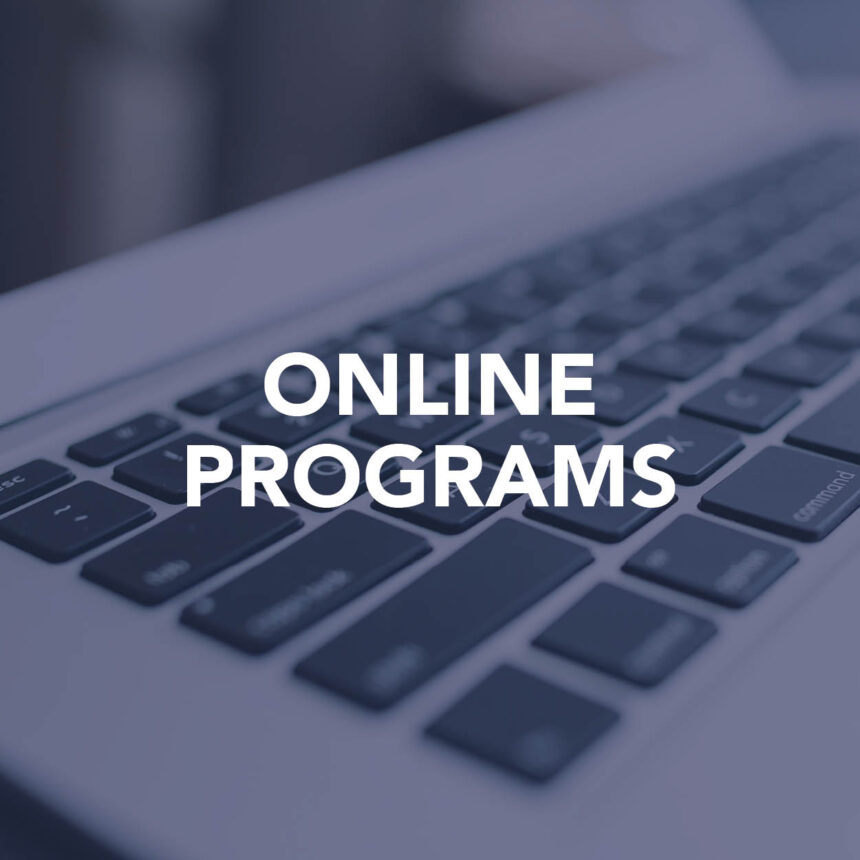In today’s rapidly evolving educational landscape, online programs have become a popular alternative to traditional classroom-based learning. The flexibility and accessibility offered by online education make it an appealing choice for many individuals who want to pursue further education, enhance their skills, or even transition to a new career.
However, with the variety of online programs available, it’s important to choose the right format that suits your unique learning style. The success of your online learning experience depends largely on how well the program aligns with your preferred way of absorbing and retaining information.
In this comprehensive guide, we will explore how you can match your learning style to the ideal online program format. Whether you’re a visual learner, an auditory learner, or someone who thrives with hands-on activities, understanding the different online learning formats and how they correspond to your style is key to maximizing your education.
Understanding the Different Learning Styles
Before we dive into the specifics of online program formats, it’s essential to understand the different learning styles. Each person has a unique way of processing information, and identifying your primary learning style will help you choose the most effective online program for your needs. Here are the main learning styles:
Visual Learners
Visual learners absorb information best when they see it. They often prefer diagrams, charts, videos, and other visual aids to help them understand and retain concepts. For these learners, the more visual content an online program offers, the better. Visual learners typically benefit from programs that include video lectures, infographics, and interactive visual content.
Auditory Learners
Auditory learners, as the name suggests, learn best by listening. These individuals are more likely to absorb information when it is spoken or delivered through auditory means. For auditory learners, online programs that include podcasts, recorded lectures, and audio-based resources are ideal. They may struggle with reading-heavy courses but excel when they can listen to explanations and discussions.
Kinesthetic Learners
Kinesthetic learners are those who learn best through hands-on activities. They need to engage physically with the material to truly understand it. For these learners, interactive and experiential learning environments work best. Online programs that offer opportunities for practical exercises, labs, and simulations are particularly beneficial for kinesthetic learners.
Reading/Writing Learners
Reading/writing learners prefer written words as their primary method of learning. They excel when they can read detailed explanations and write notes or summaries to help process information. These learners thrive in online programs that include comprehensive reading materials, assignments, and written assessments.
Knowing your learning style is the first step in choosing the right online program format. Once you’ve identified how you learn best, you can begin to evaluate the different formats that online programs offer.
Exploring Online Program Formats
The range of online programs available today is vast. From self-paced courses to instructor-led classes, each format has its unique strengths and weaknesses. Understanding the various types of online programs will help you determine which one aligns best with your learning style.
Self-Paced Online Programs
Self-paced online programs are among the most flexible types of learning formats. As the name suggests, these programs allow learners to progress through the material at their own pace. This flexibility can be a great advantage for individuals who need to balance their studies with other commitments, such as work or family responsibilities.
Ideal for Visual Learners

Visual learners may find self-paced online programs particularly appealing. These programs often include a wide range of multimedia elements, such as video lectures, interactive diagrams, and visual aids, which allow visual learners to absorb the material in a format that works best for them. Additionally, many self-paced programs offer the ability to pause, rewind, and review videos and other visual content, which is ideal for learners who need to process information more thoroughly.
Benefits for Auditory Learners
While self-paced online programs are often heavily visual, they can also be a good fit for auditory learners. Many self-paced courses include recorded lectures or podcasts that auditory learners can listen to at their convenience. The freedom to pause and replay these audio resources allows auditory learners to absorb information at their own pace, ensuring they don’t miss critical concepts.
Challenges for Kinesthetic Learners
Kinesthetic learners may find self-paced online programs more challenging because they often lack the hands-on, interactive experiences that these learners thrive on. However, some self-paced programs incorporate virtual labs, simulations, and interactive exercises, which can help kinesthetic learners engage with the material in a more practical, hands-on way.
Instructor-Led Online Programs
Instructor-led online programs are structured courses where an instructor guides the students through the material. These programs often follow a set schedule, with live lectures, assignments, and exams. The interaction between students and instructors can help create a more engaging learning environment.
Best for Kinesthetic Learners
Instructor-led programs can be an excellent choice for kinesthetic learners. Many of these courses include live discussions, group projects, and interactive assignments that provide opportunities for hands-on learning. The live interactions with the instructor and classmates can help kinesthetic learners engage with the material in a way that aligns with their learning style.
Ideal for Reading/Writing Learners
For reading/writing learners, instructor-led online programs are often an excellent match. These courses tend to offer detailed reading materials, assignments, and written assessments that allow these learners to engage with the content in a manner that suits their strengths. The structured nature of these programs also helps reading/writing learners stay organized and focused.
Hybrid or Blended Online Programs
Hybrid or blended online programs combine elements of both self-paced and instructor-led formats. These programs often include both pre-recorded lectures and live class sessions. Students are required to complete assignments and participate in discussions, but they also have some flexibility in how they engage with the course materials.
A Good Fit for Visual and Auditory Learners
For visual and auditory learners, hybrid programs can be an ideal option. The combination of video lectures, interactive content, and live sessions provides a comprehensive learning experience that caters to different aspects of their learning style. Visual learners can benefit from the visual aids in pre-recorded lectures, while auditory learners can engage with the content through the live discussions and recorded audio resources.
Benefits for Kinesthetic Learners
Hybrid programs can also offer benefits for kinesthetic learners. The live interactions and group activities in hybrid courses provide opportunities for hands-on engagement with the material. While the online format may still present some challenges for kinesthetic learners, the inclusion of interactive exercises and live sessions helps create a more dynamic learning environment.
Microlearning Programs
Microlearning is a more recent trend in online education. These programs break down content into small, digestible chunks that learners can engage with in short sessions. Microlearning is often delivered through videos, quizzes, and other interactive formats.
Perfect for All Learning Styles
Microlearning programs are versatile and can cater to a wide range of learning styles. Visual learners can benefit from the concise, visually rich content, while auditory learners can engage with the audio-based resources. Kinesthetic learners may appreciate the short, interactive activities that allow them to engage with the material in a hands-on way. Finally, reading/writing learners can take advantage of the text-based resources and assessments.
Considerations When Choosing an Online Program Format
When selecting an online program, it’s important to consider not just your learning style but also other factors that can affect your success. These include the program’s level of interactivity, the availability of instructor support, and the time commitment required.
Interactivity
The level of interactivity in an online program is a critical factor in determining how well it will suit your learning style. If you prefer to learn through hands-on experiences, programs that include interactive elements such as simulations, labs, and group discussions will be more beneficial. On the other hand, if you prefer to absorb information passively, programs that focus on video lectures or reading materials might be more appropriate.
Instructor Support
Another consideration is the amount of instructor support available in the program. Instructor-led programs tend to offer more opportunities for direct interaction with the instructor, which can be beneficial for learners who need clarification or guidance. Self-paced programs may offer less support, though some may include forums, email communication, or virtual office hours to help students stay on track.
Time Commitment
Online programs vary in terms of the time commitment required. Self-paced programs offer the greatest flexibility but may require more self-discipline to stay on track. Instructor-led and hybrid programs often have a set schedule, which can help students stay organized and motivated. Before choosing a program, consider how much time you can realistically dedicate to your studies.
Conclusion: Choosing the Right Online Program Format
Ultimately, the best online program for you is the one that aligns with your unique learning style and goals. Whether you’re a visual, auditory, kinesthetic, or reading/writing learner, understanding how different online program formats correspond to your preferred method of learning will help you make an informed decision. By carefully considering the format of the online program, the level of interactivity, and the support available, you can ensure that your learning experience is both effective and enjoyable.
As the demand for online education continues to grow, it’s crucial to select a program that not only fits your learning style but also supports your personal and professional development. No matter where you are in your educational journey, there’s an online program out there that can help you succeed.

